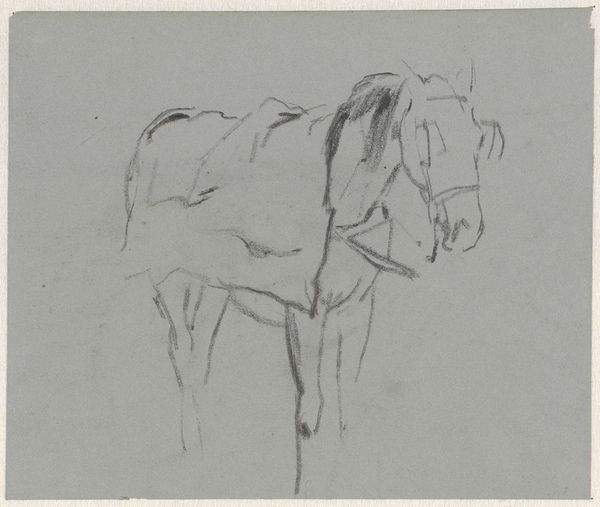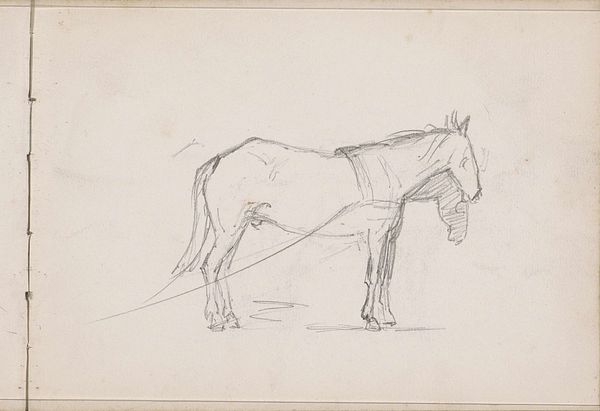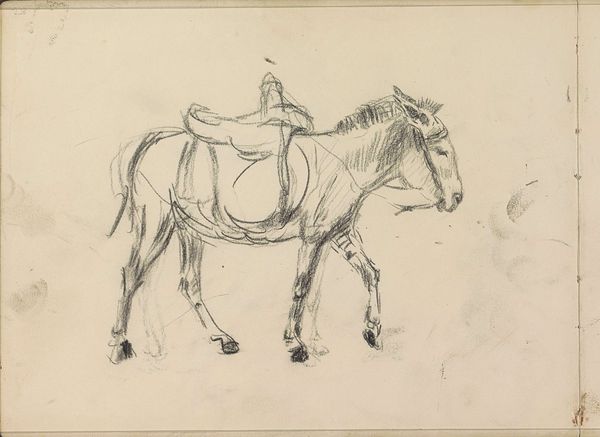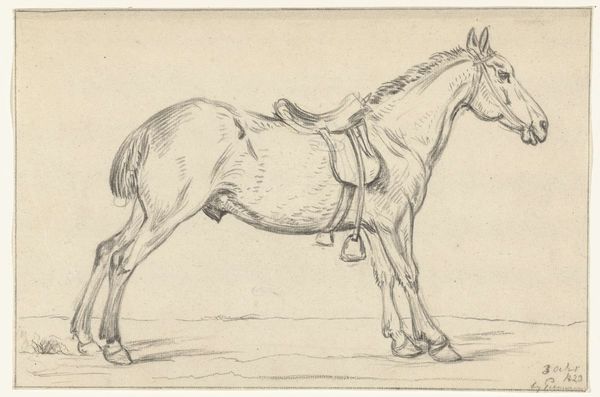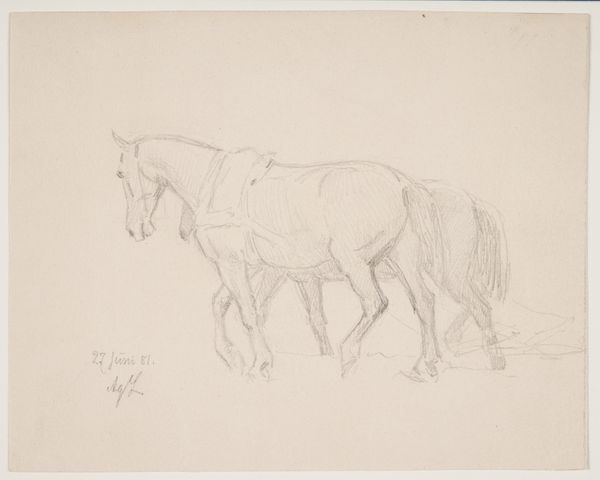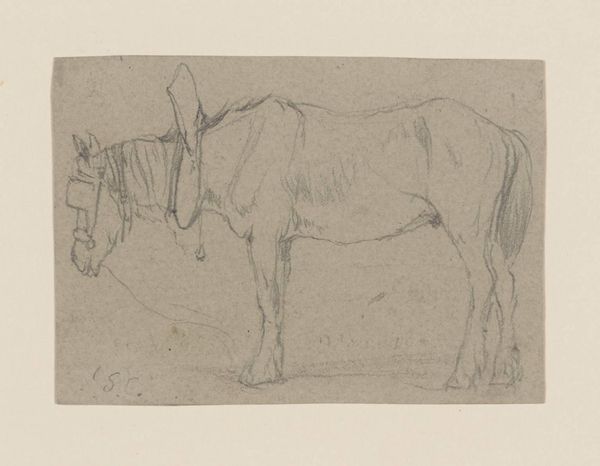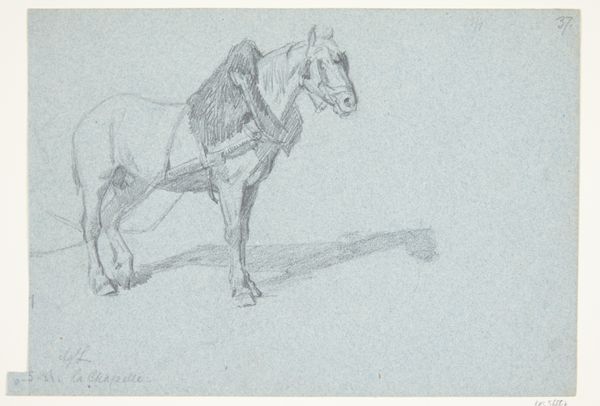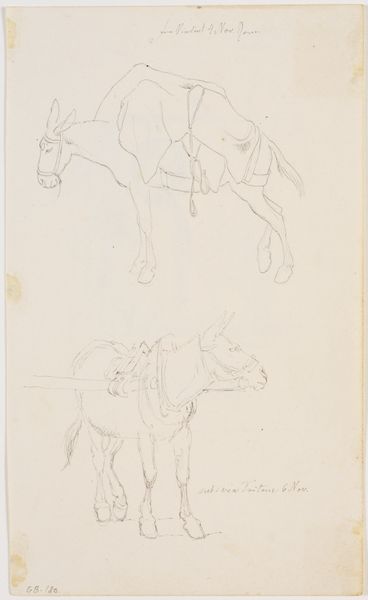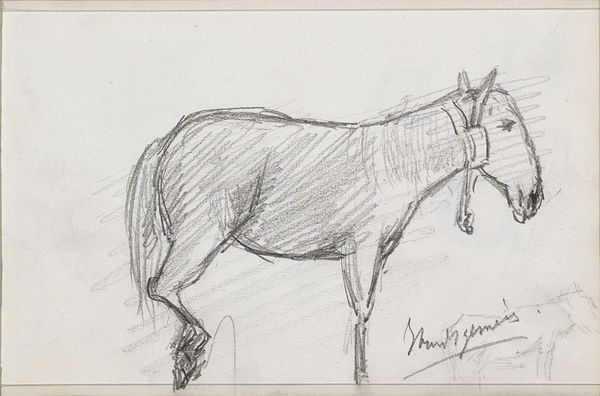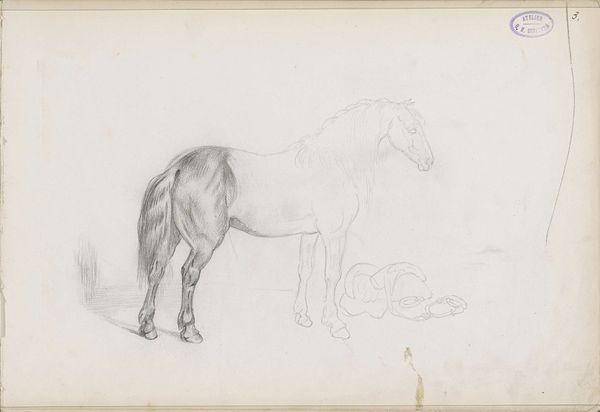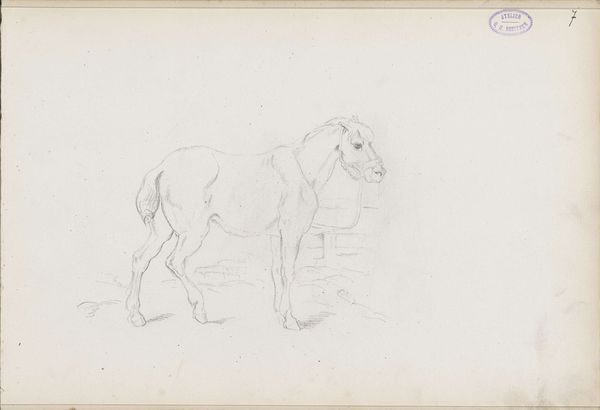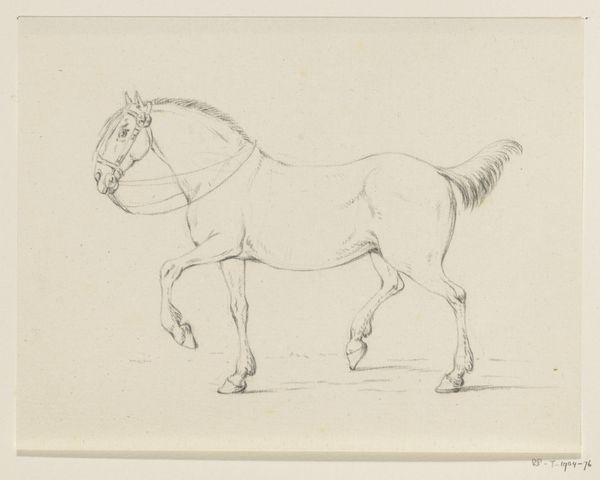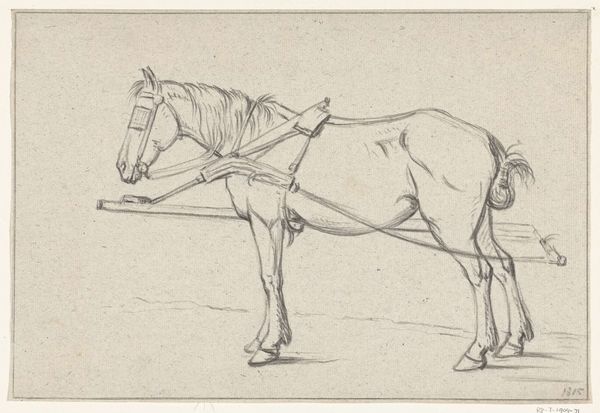
drawing, paper, pencil
#
portrait
#
drawing
#
amateur sketch
#
light pencil work
#
animal
#
pencil sketch
#
landscape
#
paper
#
personal sketchbook
#
idea generation sketch
#
ink drawing experimentation
#
pen-ink sketch
#
pencil
#
sketchbook drawing
#
sketchbook art
#
realism
#
initial sketch
Dimensions: height 240 mm, width 355 mm
Copyright: Rijks Museum: Open Domain
Hendrik Voogd made this drawing of a mule eating from a trough using pen and ink. In the late eighteenth and early nineteenth centuries, artists like Voogd were captivated by the Italian countryside. Like many of his contemporaries, he traveled there. The mule, of course, was a common sight, and a beast of burden central to the rural economy. But it also comes to us loaded with cultural associations. The animal evokes a sense of the picturesque. We can almost hear the sounds of rural Italy and smell the dry, dusty air. This drawing offers valuable insights into the social and economic history of the period. It reveals the centrality of animal labor in the pre-industrial world. The historian can use sources like travel journals, economic surveys, and agricultural treatises to contextualize the work. We can begin to appreciate its place in the cultural imagination of its time.
Comments
No comments
Be the first to comment and join the conversation on the ultimate creative platform.
